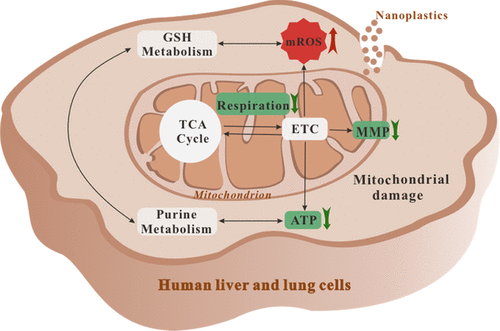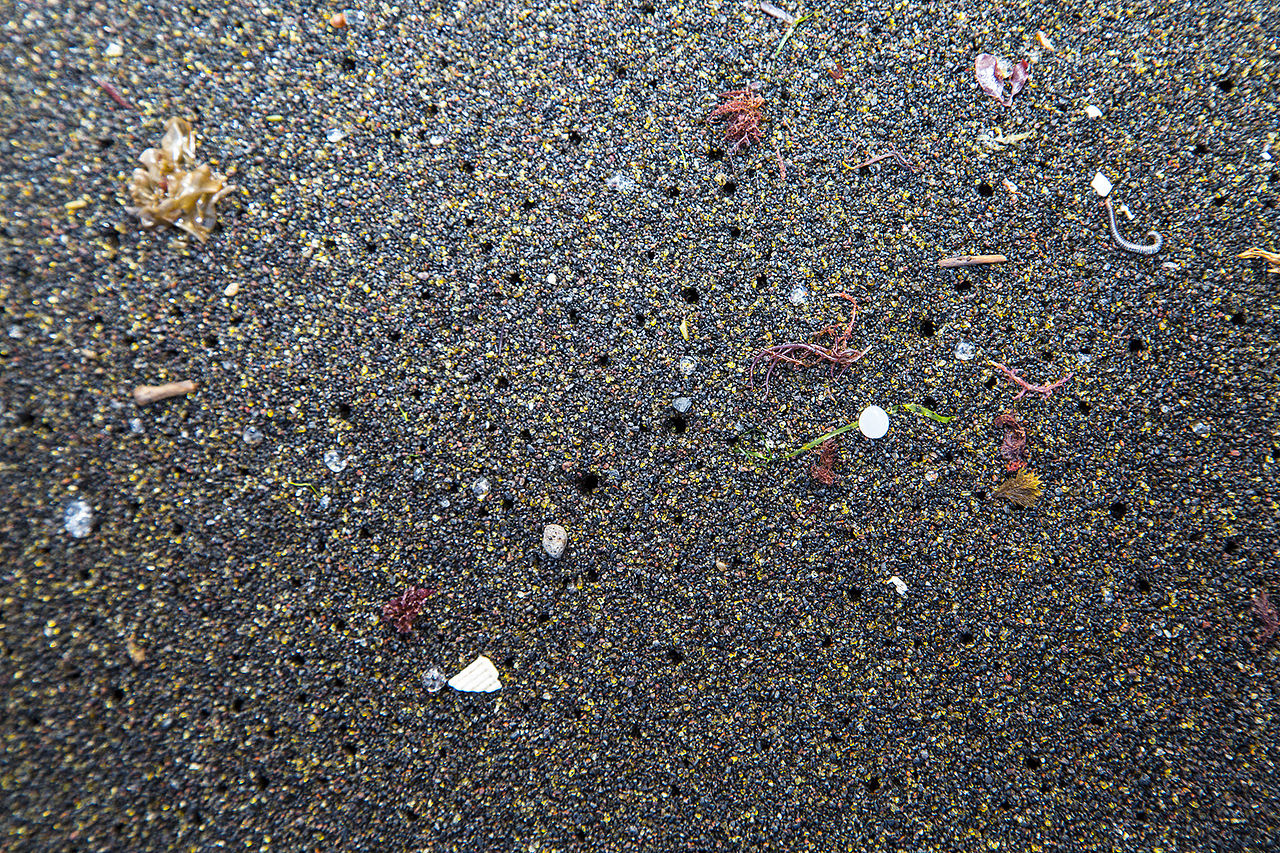
via American Chemical Society
Nanoplastics can disrupt human liver, lung cells’ processes in lab experiments
What happens when people unknowingly eat, drink or inhale nearly invisible pieces of plastic? Although it’s unclear what impact this really has on humans, researchers have now taken a step toward answering that question. In ACS’ Environmental Science & Technology, a team reports laboratory results indicating that tiny plastic particles could enter liver and lung cells and disrupt their regular processes, potentially causing adverse health outcomes.
Plastic can’t be avoided in daily life. Many products that we bring into our homes are made of plastic or wrapped in plastic packaging — all of which could release micro- and nanometer-sized pieces that could be accidentally consumed or inhaled. Although the health risks to humans from taking in nanoplastics isn’t entirely clear, researchers recently have shown that particles less than 100 nm-wide can enter animals’ blood and organs, causing inflammation, toxicity and neurological changes. So, Zongwei Cai, Chunmiao Zheng and colleagues wanted to examine the molecular-level and metabolic impacts when human lung and liver cells are exposed to similarly sized nanoplastics.
The researchers cultured human liver and lung cells separately in laboratory plates and treated them with different amounts of 80 nm-wide plastic particles. After two days, electron microscopy images showed that nanoplastics had entered both types of cells without killing them.
To learn more about what happened to the cells, the researchers looked at the compounds released by mitochondria — crucial energy-producing organelles that are thought to be sensitive to nanoplastics — during metabolism. As liver and lung cells were exposed to more nanoplastics, they produced more reactive oxygen species and different amounts of nucleotides, nucleosides, amino acids, peptides and carboxylic acids, indicating that multiple metabolic processes were disturbed. In some cases, mitochondrial pathways appeared to be dysfunctional. These observations demonstrate that while nanoplastics exposure doesn’t kill human lung and liver cells, it could disrupt critical processes, potentially causing negative impacts to organs, the researchers say.
Original Article: Nanoplastics can disrupt human liver, lung cells’ processes in lab experiments
More from: Hong Kong Baptist University | Chinese Research Academy of Environmental Sciences | The Education University of Hong Kong
The Latest Updates from Bing News
Go deeper with Bing News on:
Microplastics
- Microplastics -- A silent environmental disaster
Muscat: Recent scientific studies have warned of a silent environmental disaster in the form of the accumulation of microplastics around the ...
- Researchers uncover new oceanic locations where microplastics are accumulating: 'Global initiatives are necessary to conserve these rich ecosystems'
If coral reefs die or dwindle in health, whole ecosystems could be affected. Researchers uncover new oceanic locations where microplastics are accumulating: 'Global initiatives are necessary to ...
- Toxic chemicals from microplastics can be absorbed by the skin, study finds
A new study used 3D human skin-equivalent models to examine how flame retardant additives in microplastics are absorbed by the skin. The findings show that several flame-retardant additives passed ...
- Another Crab’s Treasure: Best places to farm Microplastics
Another Crab’s Treasure Go to the Cave of Respite Moon Shell (this will be your save spot). Jump to the platform next to the Moon Shell (on the right of it if you are looking at the entrance).
- 5 Ways To Reduce Your Microplastics Exposure In The ‘Plasticene’ Era
Emerging research shows microplastics—which are everywhere—are linked to health problems. Here are five ways to reduce your microplastics exposure.
Go deeper with Bing News on:
Nanoplastics
- Turning The Tide on Plastic Pollution Requires a Bold Global Effort | Opinion
We are at a tipping point. Plastic pollution is affecting planet, animal, and human health. We have hope that INC-4 stakeholders will take important steps toward solidifying a global treaty on plastic ...
- Which foods have the most plastics? The answer may surprise you
One liter of water — the equivalent of two standard-size bottled waters — contained an average of 240,000 plastic particles from seven types of plastics, including nanoplastics, according to a ...
- Invisible Threat: Toxins in our food and water
As the world celebrates Earth Day on Monday, a sobering reality is that our food and water sources are becoming increasingly contaminated with microplastics and toxic metals. But what can you do about ...
- Revealed: how much plastic is in our water
Followed categories will be added to My News. Microplastics are small fragments measuring up to 5mm, but nanoplastics are absolutely minuscule, measuring no more than one micrometre – about one ...
- Revealed: how much plastic is in our water
Microplastics are small fragments measuring up to 5mm, but nanoplastics are absolutely minuscule, measuring no more than one micrometre – about one sixtieth the size of a grain of salt.










